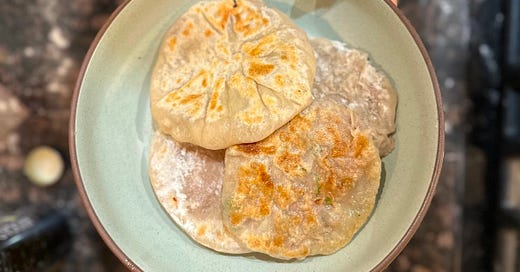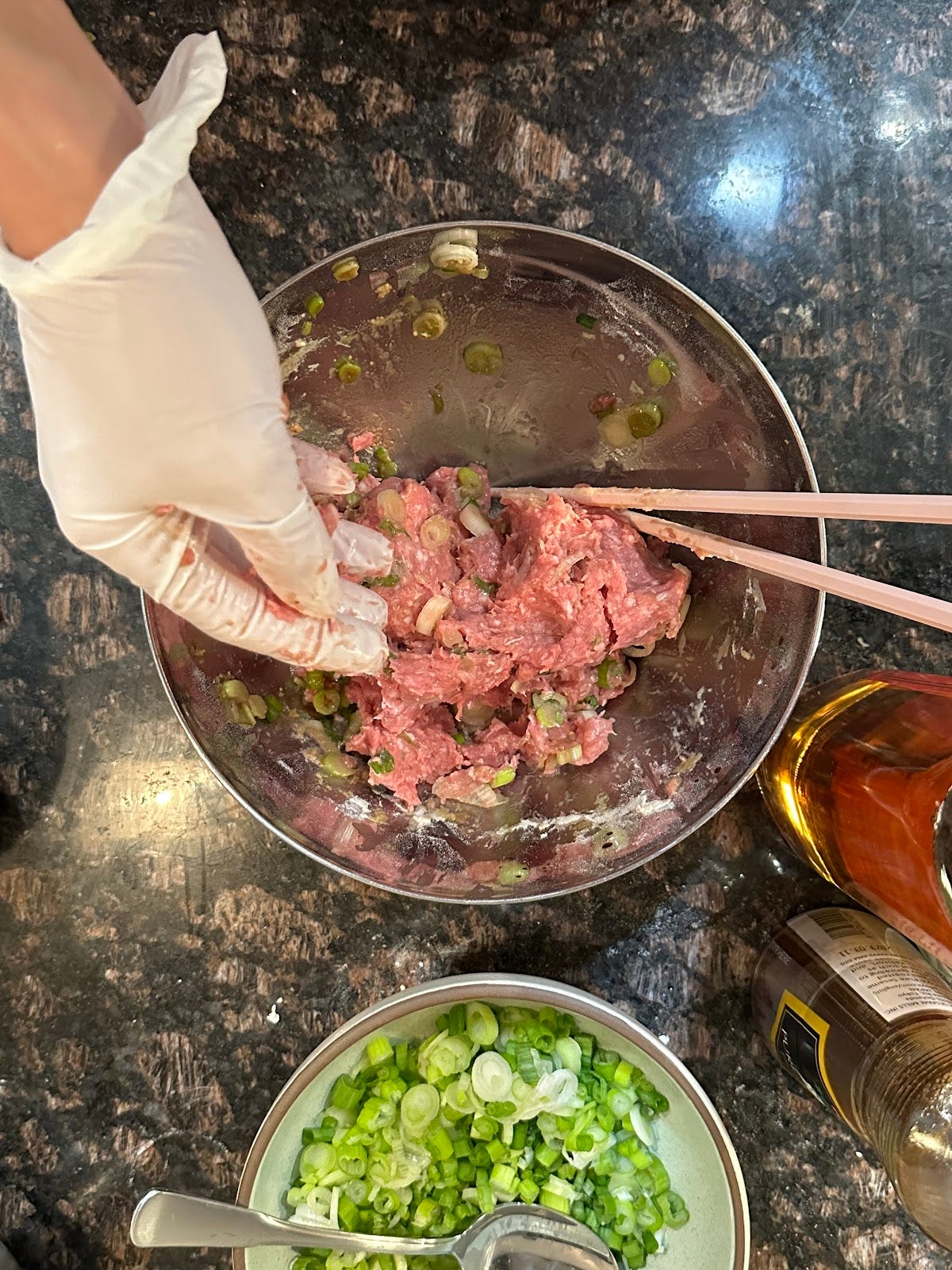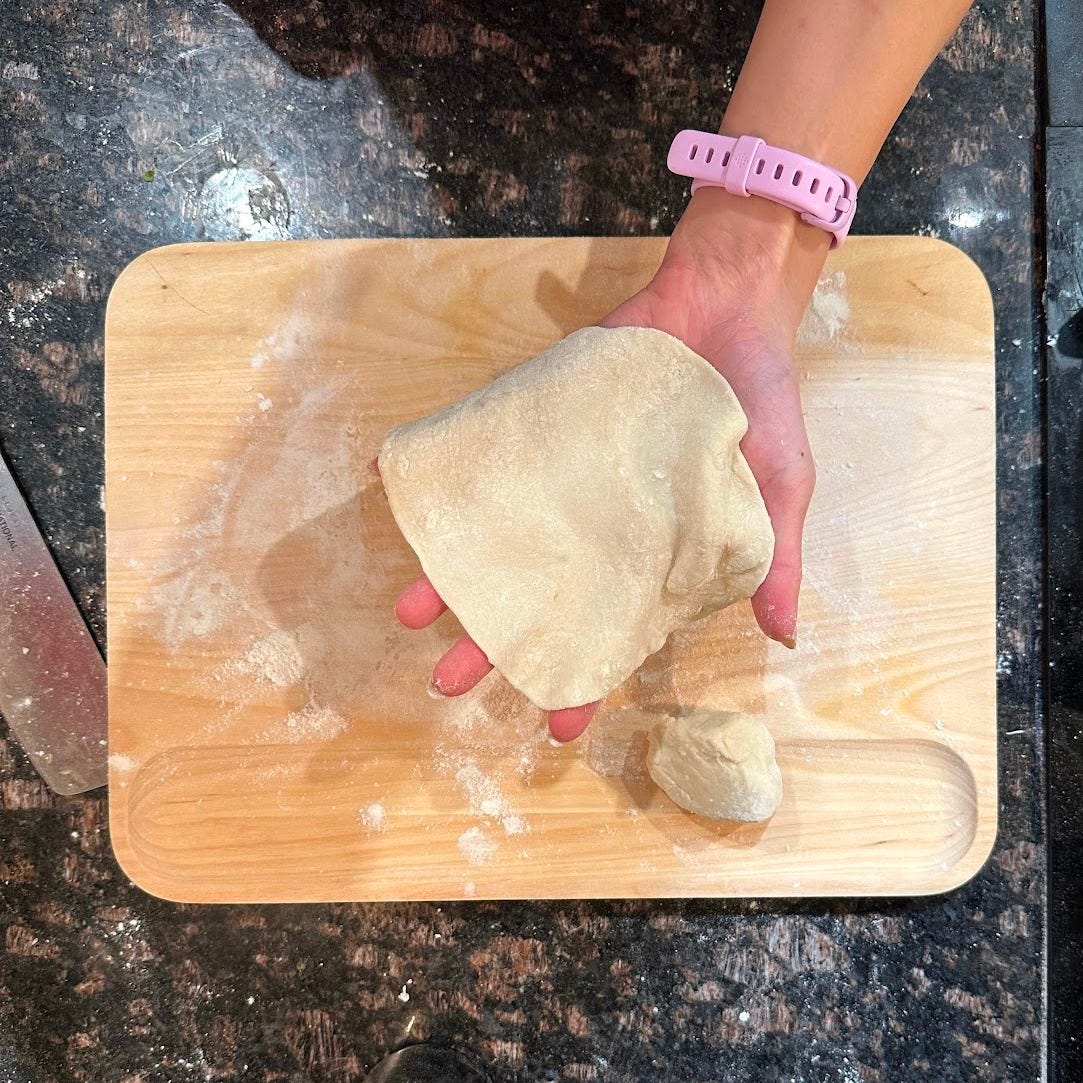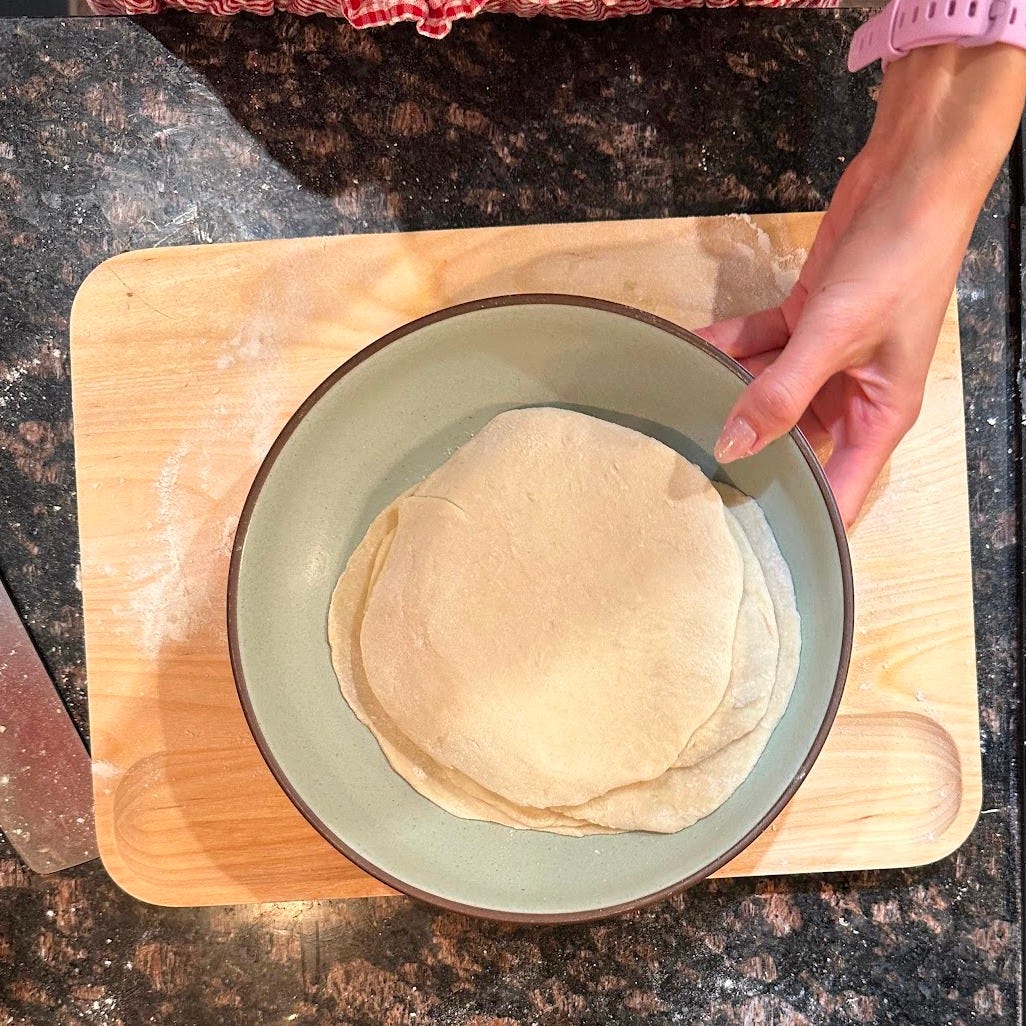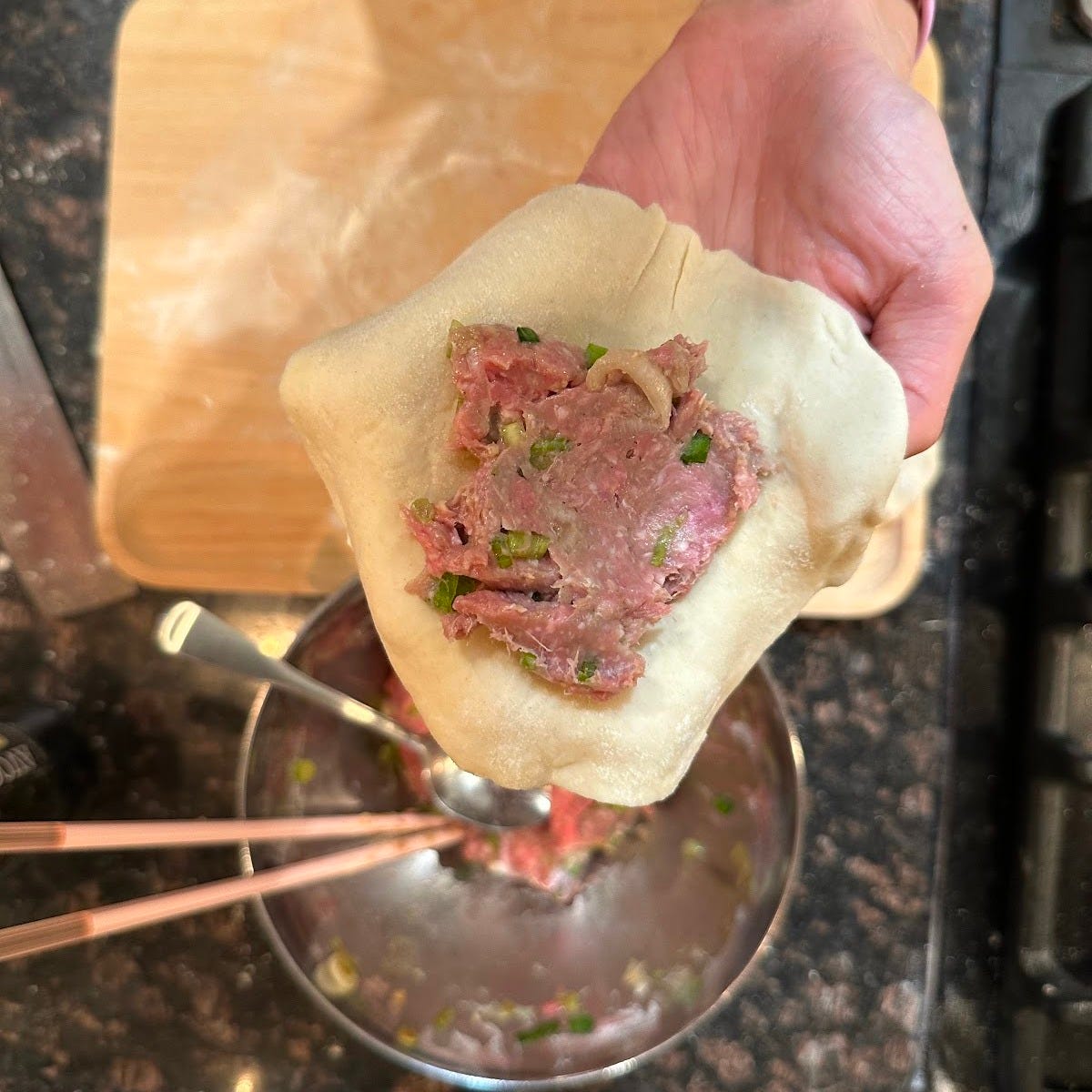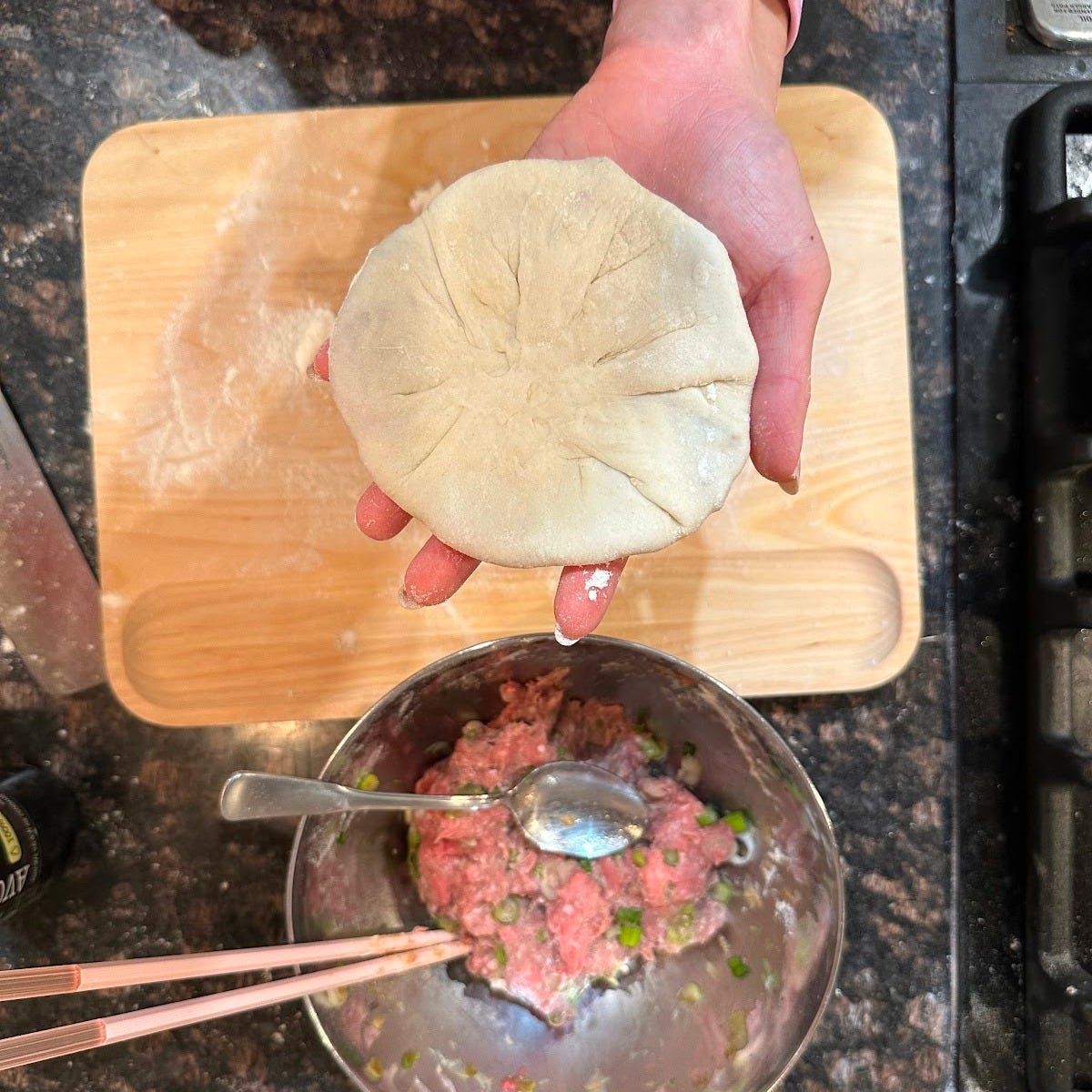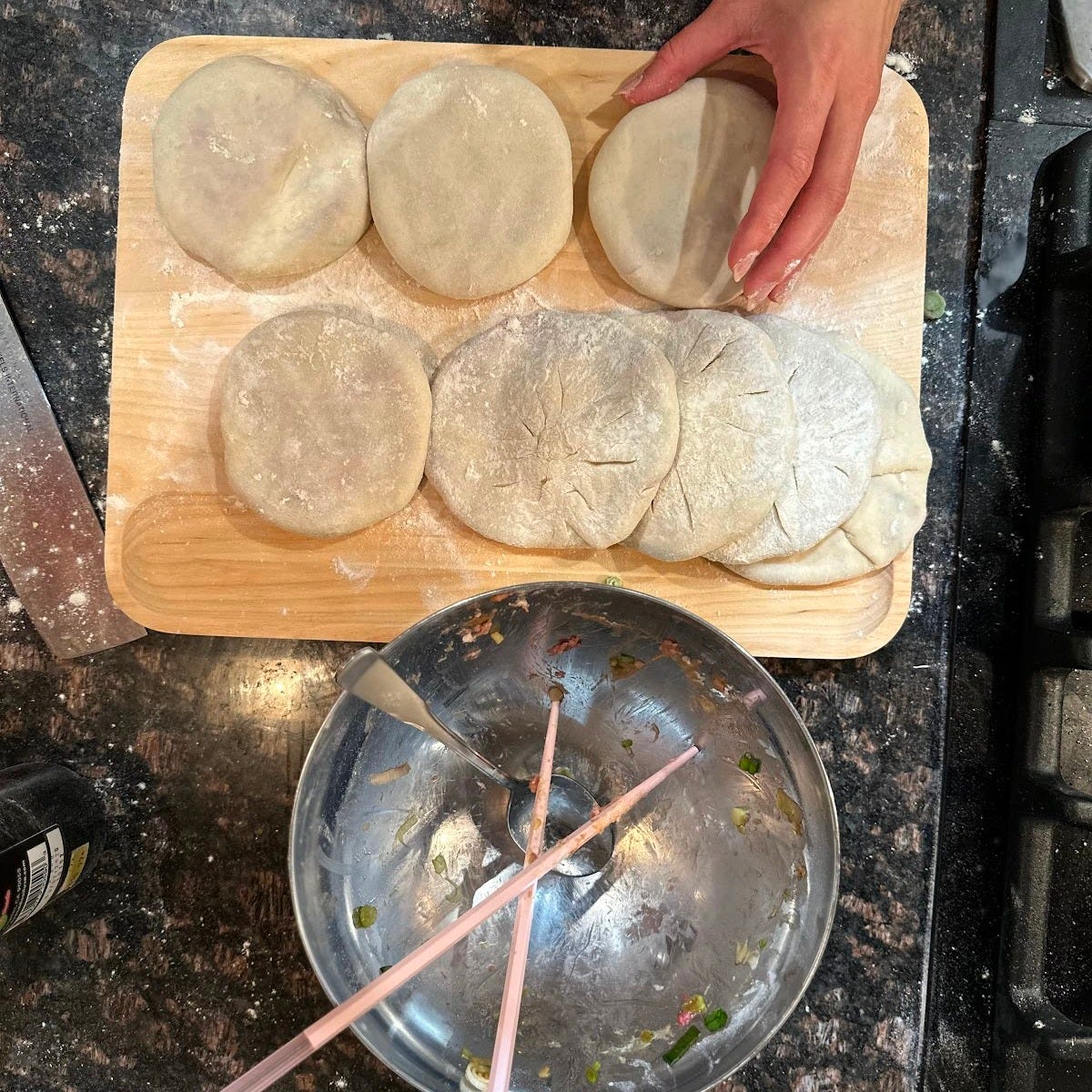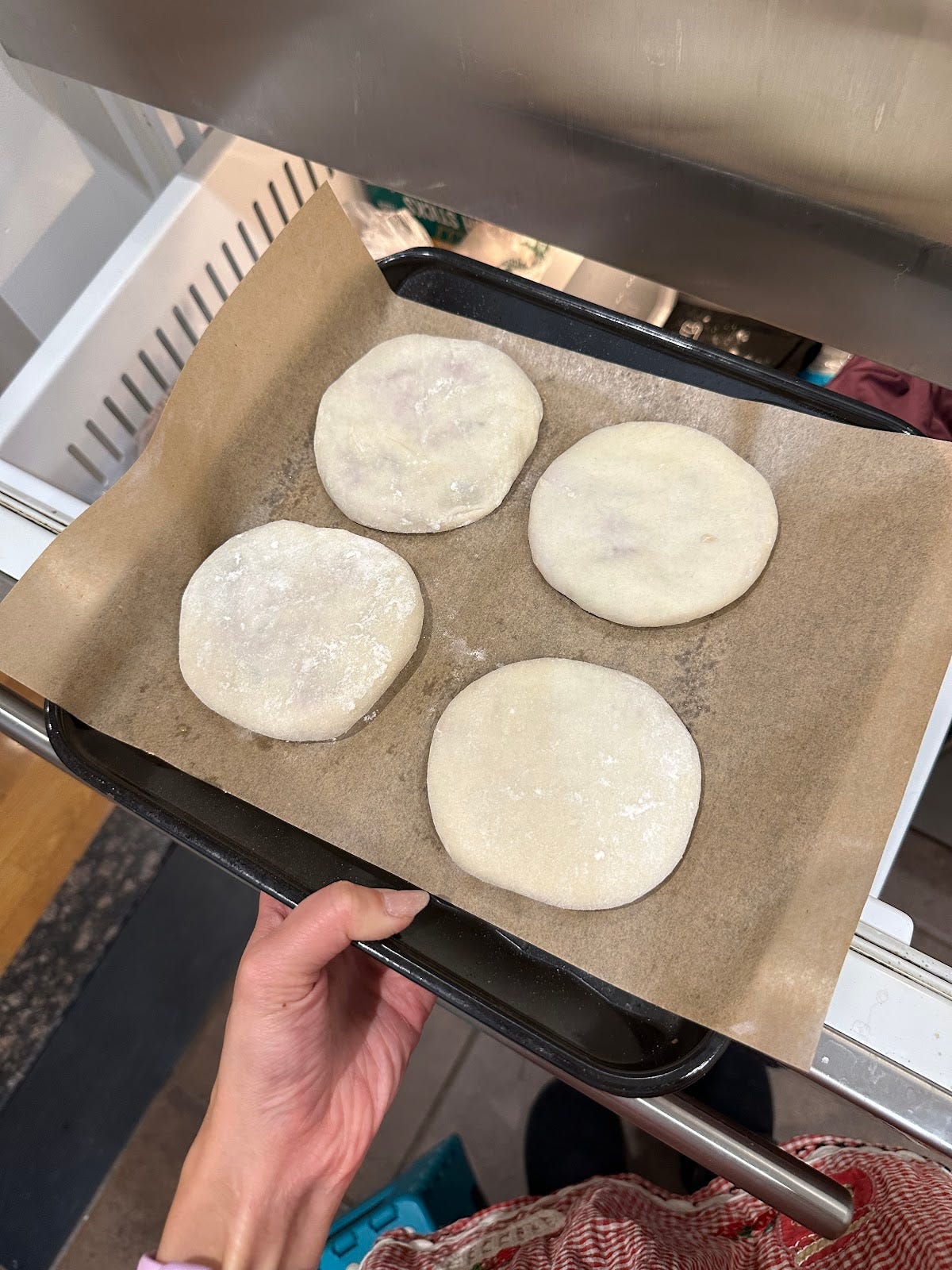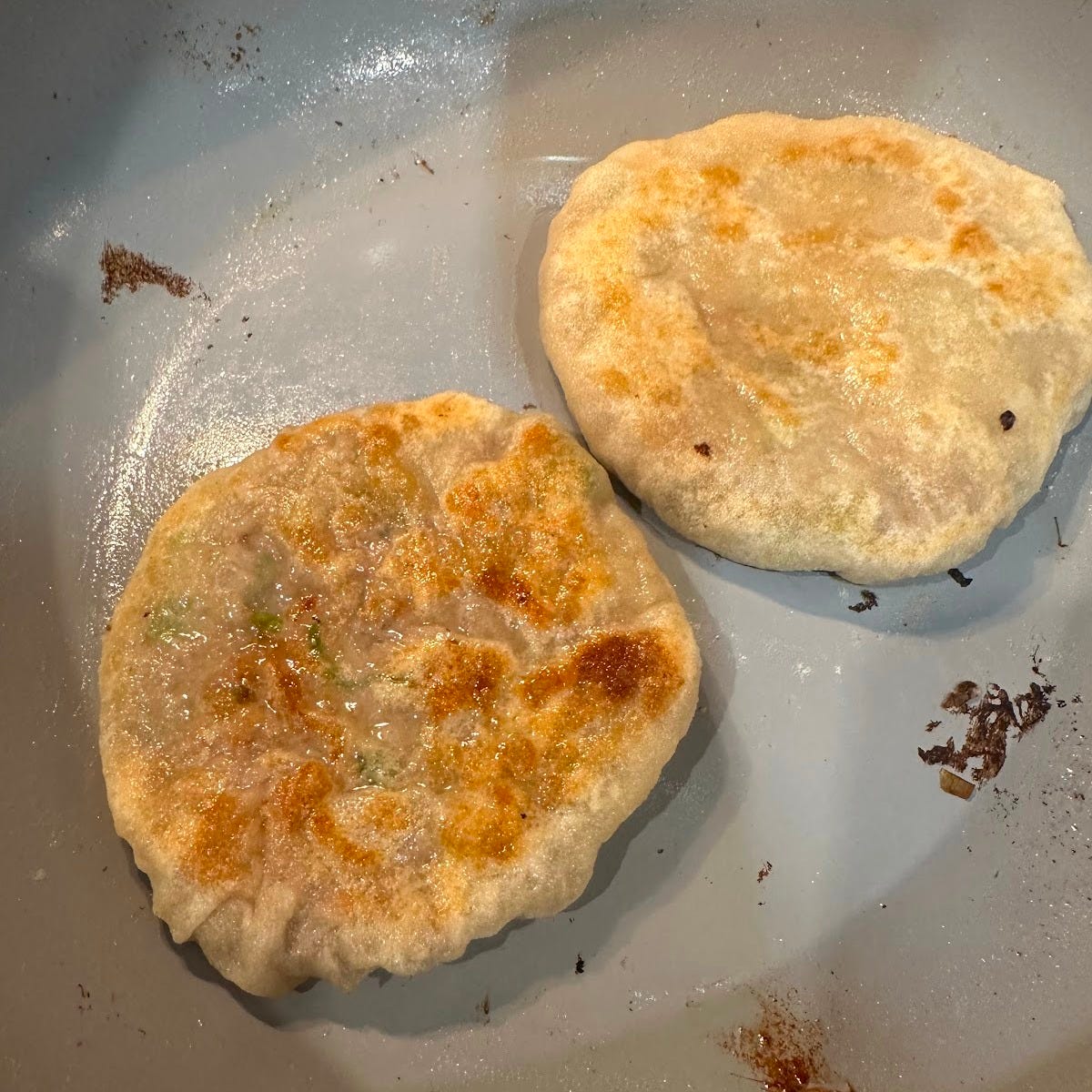Part II in a series is dedicated to the art of the Chinese bing, where I seek to spread love for my favorite category of food, this unsung hero of Chinese everyday cuisine. For part I, check out last week's letter, where I shared my mom’s scallion pancakes recipe, and follow my Instagram @fivethingsiate for photos and videos.
My guess is that we could all use a little comfort this week. That’s why I’m sharing my recipe for xian bing, my favorite childhood comfort food.
Xian bing (馅饼), which translates directly to “filling bing”, is also known as the humble Chinese meat pie.
You can think of it like a really juicy stuffed flatbread. On the outside is a thin layer of unleavened dumpling dough that’s crisped up on the stovetop, and on the inside is a juicy meat filling. When you take a bite, you get the textural contrast of crispy exterior and an explosion of juices from the warm meat filling inside. There’s really nothing like the first bite of xian bing, hot off the skillet. (If you’re serving them a bit later, the juices soak into the wrapper, for a different, but also tasty bite.)
For the life of me, I can’t figure out why it’s not as popular as dumplings — it really should be, and is much easier to make, not to mention a perfect portable food. A perfect cooking project for stressful times.
Lamb Xian Bing (Xian Bing/馅饼)
Makes 8 xian bing. 2 per person would make a light meal.
I keep my xian bing filling super simple with just some scallions, ginger, soy sauce, shaoxing, and sesame oil to complement the lamb, so that these taste really lovely and clean. Lamb is my favorite meat filling but you could easily use beef.
Don’t be intimidated by making the dough from scratch. Shaping and forming the xian bing is easier than it looks — the dough is super soft and forgiving, and you don’t need to roll it out thin unless you want to. A simple pleat, pat down and a roll or two or even just a few pats so it’s shaped like a thick cookie will do. Of course, you can use a rolling pin to make them as thin as you want — the dough is very pliable.
You will need:
1.5 cups flour, divided into half
Water
Pinch salt
2 stalks scallion
12 oz ground lamb or beef
1 tsp grated fresh ginger
Shaoxing wine
sesame oil
White pepper
oil for frying
First, make the filling:
Clean and finally dice 2 stalks of scallion. In a large bowl, add 12 oz ground lamb or beef, 1 teaspoon fresh grated ginger, and the scallions. At this point I’m going to act like a Chinese mom, and tell you to add soy sauce, shaoxing wine, sesame oil, and white pepper to taste. I never measure, but let’s say approximately one large glug of soy sauce (2 tablespoons?), a slightly smaller glug of shaoxing wine (1 tbs?), and IMPORTANTLY A SMALL GLUG of sesame oil, no more than a teaspoon because Westerners always overuse sesame oil, and a ½ teaspoon of white pepper. Sorry, I could make this recipe more precise but then it would be less authentically Chinese :’).
Put on disposable gloves, and combine everything together thoroughly, like you’re making meatballs.
Cover and set aside in the fridge.
Then, make the dough:
If you missed last week’s lesson or my original instructions for hot and cold water dough, go back and study it again!! Or, if you’re impatient, read the instructions below, but don’t complain that I didn’t paste photos here:
First, make the cold water dough:
To start, put a kettle of water to boil on the stove for the hot water dough.
In a medium mixing bowl, combine 3/4 cup of flour and a pinch of salt.
Slowly pour in cold water, furiously stirring with chopsticks.
Stop when you reach the “snowflake” stage, or the dough starts to clump up.
Knead by hand until you form a smooth dough, and cover and set aside.
Meanwhile, make the hot water dough:
In a medium mixing bowl, combine 3/4 cup of flour and a pinch of salt.
Slowly stream in the hot water, which should just be off the boil, furiously stirring with chopsticks.
Stop when you reach the “snowflake” stage, or the dough starts to clump up. The dough will sort of “cook” due
Knead by hand until you form a smooth dough, and cover and set aside.
Now, combine the two doughs:
Put the hot water and cold water dough together in the same large mixing bowl, or a lightly floured surface.
Knead till combined – this is going to take some elbow grease!
You can set aside until ready to use, covered and at room temperature (resting is actually nice for the dough, so this might be a nice time to take a break, if you need it).
Form the xian bing:
First, roll the dough into a log, and cut into 8 even pieces.
Next, you’re going to use a rolling pin to roll each piece into a circle:
Don’t stress too hard about this step. I literally used an olive oil bottle to do this, and in a pinch i’ve just smushed the dough with my palm. In the picture here, I made the dough quite thin, but you can also simply roll it into a ball and squish it down.
A thinner xian bing means it can fry up crispier, but you need to eat them asap or the lamb juices will soak through the dough.
A slightly thicker xian bing gives you more contrast between fried crust, soft dough, and warm lamb.
Either way, repeat x8.
Next, put a meatball size spoonful of filling onto a wrapper:
And pinch shut, baozi style:
Once again, don’t stress about making it perfect. If you don’t know how to form baozi, you can just pinch it altogether. As long as all the dough is sealed and it doesn’t leak, you’ll do just fine.
Flatten the formed xian bing slightly, so it’s like a thick cookie:
Set aside, and repeat x8.
At this point, you can freeze the xian bing. Similar to scallion pancakes, these are best served hot off the flame, so if you’re making it in advance, it’s better to freeze raw and cook from frozen. If freezing, spread apart on a baking sheet till frozen, then put into a ziploc freezer bag for longer storing.
Finally, time to fry!
In a large skillet, heat 1 tablespoon oil over a medium-high flame.
Once the oil is shimmering, add as many xian bing as can comfortably fit with an inch between.
Fry on one side, covered, till golden brown (3-5 minutes), then flip and cover, continue frying till golden brown (another 3-5) minutes. These times are approximate because (Chinese cooking) it purely depends on how thin or thick you form your xian bing.
Here’s a photo reference:
But note I made my xian bing super thin!
Continue frying until you use up all the xian bing.
Enjoy immediately, with a side of black vinegar and/or soy sauce for dipping.
Enjoy :) I hope this recipe allows you to enjoy the process and relax a little bit.
XOXO,
Soph
P.S. If you make this recipe, please let me know how it turned out! And feel free to reply to this email for questions or to let me know how it went.

